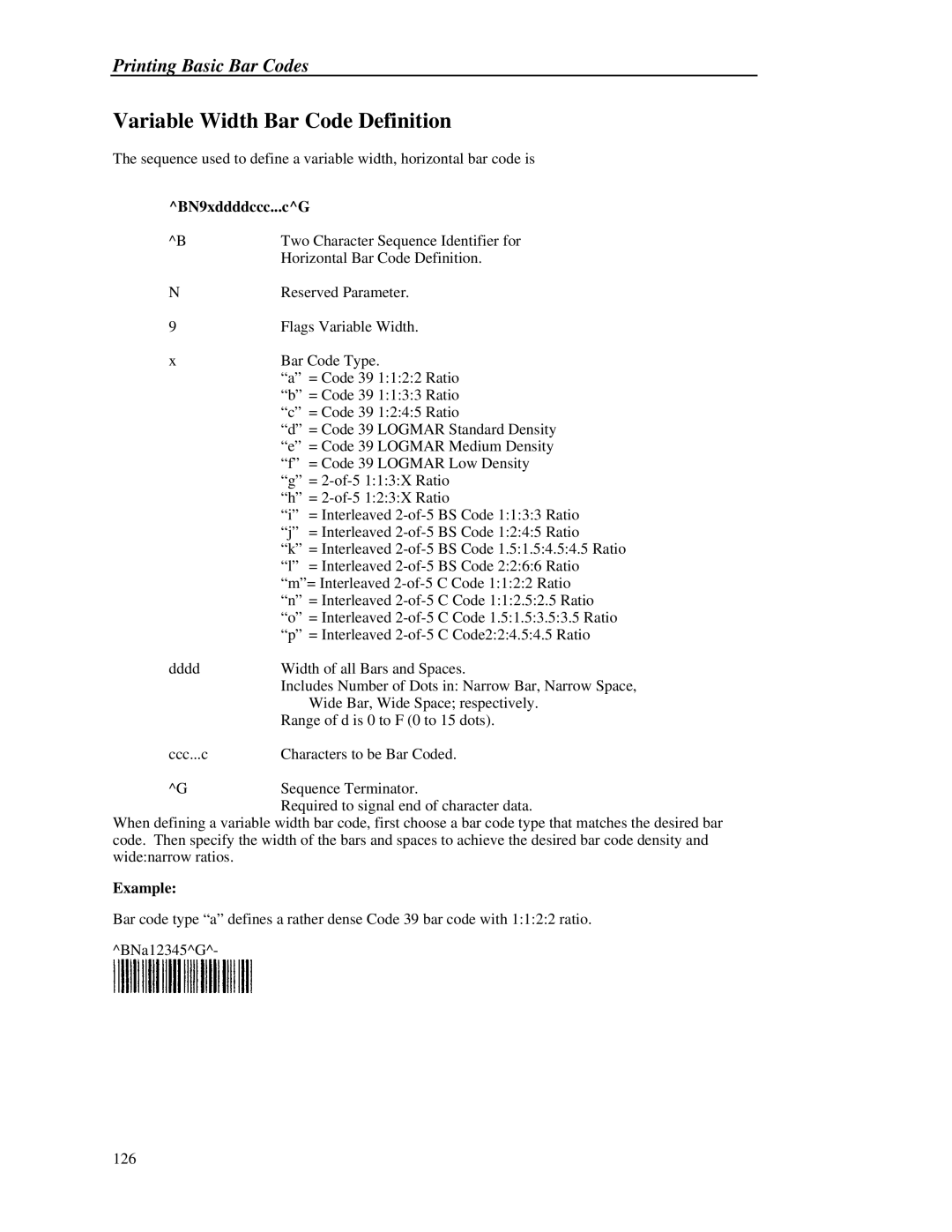
Printing Basic Bar Codes
Variable Width Bar Code Definition
The sequence used to define a variable width, horizontal bar code is
^BN9xddddccc...c^G
^B | Two Character Sequence Identifier for |
| Horizontal Bar Code Definition. |
N | Reserved Parameter. |
9 | Flags Variable Width. |
xBar Code Type.
“a” = Code 39 1:1:2:2 Ratio “b” = Code 39 1:1:3:3 Ratio “c” = Code 39 1:2:4:5 Ratio
“d” = Code 39 LOGMAR Standard Density “e” = Code 39 LOGMAR Medium Density “f” = Code 39 LOGMAR Low Density “g” =
“h” =
“i” = Interleaved
“k” = Interleaved
“n” = Interleaved
ddddWidth of all Bars and Spaces.
Includes Number of Dots in: Narrow Bar, Narrow Space, Wide Bar, Wide Space; respectively.
Range of d is 0 to F (0 to 15 dots).
ccc...c | Characters to be Bar Coded. |
^G | Sequence Terminator. |
| Required to signal end of character data. |
When defining a variable width bar code, first choose a bar code type that matches the desired bar code. Then specify the width of the bars and spaces to achieve the desired bar code density and wide:narrow ratios.
Example:
Bar code type “a” defines a rather dense Code 39 bar code with 1:1:2:2 ratio.
^BNa12345^G^-
126
